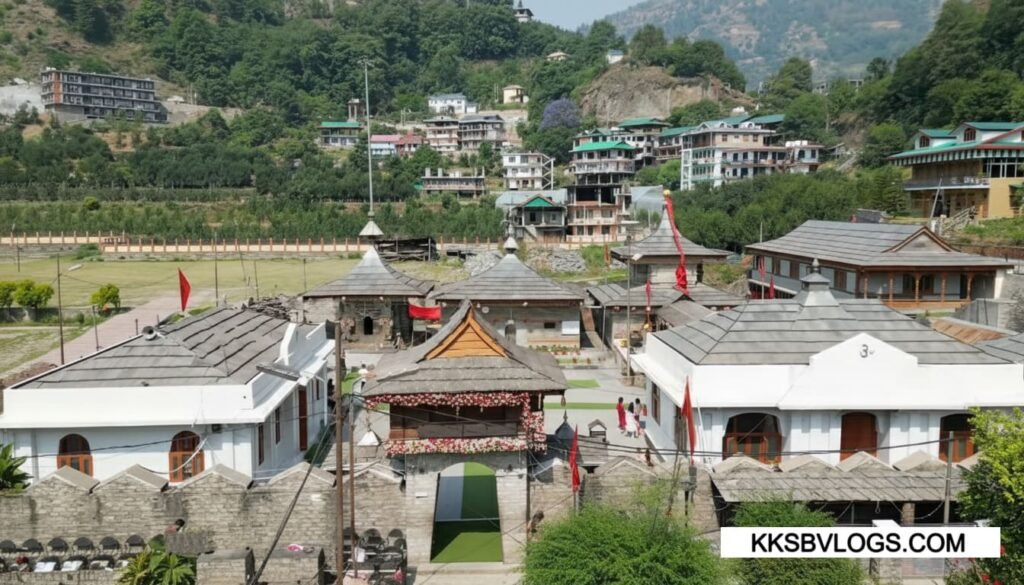1) Introduction
Nestled in the lush-green Jubbal Valley of Shimla district, Hateshwari Mata Temple (popularly known as Hatkoti Mata Temple) is one of those sacred spots in Himachal where devotion and nature meet beautifully. Located about 97–100 km east of Shimla, this revered Shakti Peeth stands on the bank of the Pabbar River, where the Bishkulti and Raanvati streams merge.
The moment you arrive, you feel a different vibe — cool mountain air, the soothing sound of the flowing river, and the natural fragrance of apple orchards together create a divine welcome.
Dedicated to Goddess Durga in her Mahishasurmardini form, the temple is believed by locals to be a powerful place where the Goddess protects devotees and helps them overcome every difficulty. Inside the temple, the temperature remains unusually cool in the mornings and evenings, adding to the spiritual experience.
During Navratri, the grand fair here is not just a religious event but also a cultural celebration that attracts people from all corners of Himachal. Festivals like Shivratri, Durga Puja, Janmashtami, Diwali, and Raksha Bandhan are also celebrated with great devotion and enthusiasm.
For travelers, Hateshwari Mata Temple in Hatkoti is an offbeat spiritual escape — a place far from the bustle of Shimla where history, faith, and pristine nature blend perfectly.
2) History & Legends of Hateshwari Mata Temple
Mythological Origins
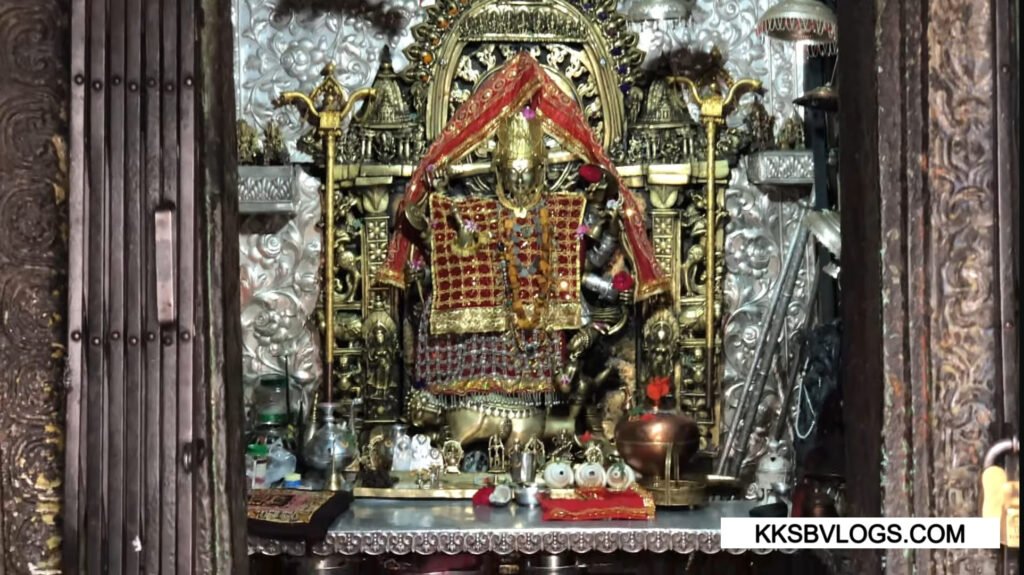
According to legends, Hatkoti is the very place where Goddess Durga slew the demon Mahishasura and established peace on earth. Since that victory, she has been worshipped here as Mahishasurmardini, and devotees believe her divine energy still resides in this sacred Hateshwari Mata Mandir.
Another local belief says that the Pandavas meditated here during their exile. Within and around the temple, there are five small stone shrines known as Pandava-deols or Pandava’s toys. These shrines continue to keep alive the epic stories of the Mahabharata era.
Historical Timeline & Inscriptions
Historians date the construction of Hateshwari Mata Temple (Hatkoti Shakti Peeth) to the 6th–9th century CE — the time of the Gupta and Pratihara dynasties, regarded as the golden era of Indian temple architecture.
Ancient stone inscriptions written in the Siddha-Matrika script have been found on the temple’s torana (gateway arch) and near the sanctum (garbhagriha). Scholars estimate these inscriptions to be from the late 9th century CE, confirming the temple’s historical importance.
Some traditions also link the temple to Adi Shankaracharya’s Himalayan journey, though solid historical proof is limited. Still, the architectural style and the precision of its stone carvings strongly establish its antiquity, making Hateshwari Mata Temple at Hatkoti one of the oldest and most historically significant temples in Himachal.
3) Architecture & Art of Hateshwari Mata Temple

Shikhara-Style Grandeur
The temple is a masterpiece of Nagara (Shikhara) style architecture. Its tall pyramidal shikhara points skyward and is visible from afar. Built entirely of stone, the structure exudes majestic strength and durability.
At the top sits a golden copper kalash (finial), uniquely chained for centuries. According to local belief, this Chained Kalash used to move on its own during floods or natural calamities to warn the villagers — a mystery that fascinates devotees even today.
Idol of Mahishasurmardini
Inside the sanctum sanctorum (garbhagriha) is a 1.2-metre-tall idol of Goddess Durga made of ashtadhatu (a sacred alloy of eight metals). The Goddess is depicted with ten arms, each holding a weapon like the chakra, trishul, or khadga. She sits majestically on her lion mount while crushing Mahishasura under her feet.
The idol’s sharp features, intricate detailing, and metallic glow create an instant spiritual connection, making devotees feel as though Hateshwari Mata’s eyes are looking deep into their soul.
Intricate Carvings & Sculptures
The stone walls and pillars are adorned with floral motifs, deity figures, and mythological scenes. Each carving silently narrates tales of the past.
A remarkable example is the relief of Simhavahini Durga, which is now preserved in the Shimla State Museum.
Temple Complex Layout & Facilities
- Main Shrine – The swayambhu (self-manifested) idol of Maa Hateshwari (Durga).
- Shiva Shrine – Featuring an oversized Shivling.
- Pandava Shrines – Five small stone shrines associated with the Pandavas.
- Yagyashala & Hawan Kund – Regular yajnas and sacred fire rituals are performed here.
- Dharamshala / Rest House – Provides comfortable accommodation for pilgrims.
- River Confluence – The meeting point of the Bishkulti and Raanvati streams with the Pabbar River, further enhancing the site’s sacredness.
4) Things to See at Hateshwari Mata Temple
Hateshwari Mata Temple (Hatkoti Shakti Peeth) is not just a temple but a heritage complex where history, spirituality, and local culture blend seamlessly. While visiting, make sure to explore:
- Main Idol of Maa Hateshwari – The most sacred spot is the sanctum where Durga in her Mahishasurmardini form resides. A single glimpse fills you with peace and divine power.
- Shiva Shrine & Shivling – A separate grand shrine with a massive Shivling where devotees love to meditate.
- Pandava Shrines (Pandava Deols) – Five small stone shrines that keep alive the legends of the Pandavas.
- The Chained Kalash – A copper kalash tied with chains that, according to local legend, once moved by itself to warn people of floods — a fascinating mystical element.
- Temple Carvings – Mythological scenes and floral patterns on walls and pillars that silently showcase the skills of centuries-old artisans.
- Riverside Aura – Stand by the Pabbar River confluence to enjoy the sound of flowing water and breathtaking mountain views — a truly soul-healing experience.
5) Festivals & Celebrations
Hateshwari Mata Temple in Hatkoti is sacred year-round, but during festivals its energy becomes even more vibrant.
- Navratri Festival – The biggest celebration here. Twice a year (Chaitra and Sharad Navratri) the entire temple complex glows with lights, rangoli, and devotional music. Thousands of devotees gather for special pujas and aartis. The fair features folk dances, songs, and cultural performances.
- Ram Navami & Dussehra – Special events and decorations make these festivals equally festive.
- Local Fairs & Jagrans – Smaller gatherings and traditional Himachali fairs take place throughout the year, highlighting the region’s folk culture.
During festivals, Hateshwari Mata Mandir (Hatkoti Shakti Peeth) becomes a living cultural hub where devotion and Himachali traditions merge beautifully.
6) How to Reach Hateshwari Mata Temple

📍 Location: Hatkoti village, Jubbal Valley, Shimla district, Himachal Pradesh
By Road
Hateshwari Mata Temple (Hatkoti Shakti Peeth) is about 98 km from Shimla city.
The most common route is Shimla → Theog → Kotkhai → Jubbal → Hatkoti, a scenic drive of about 3–4 hours through deodar forests and apple orchards.
Himachal Roadways buses run regularly from Shimla to Jubbal, from where Hatkoti is easily accessible. Families often prefer hiring a private taxi for a comfortable trip.
By Train
The nearest railway station is Shimla (100 km) on the Kalka–Shimla heritage toy train line. The onward journey must be completed by road.
By Air
The nearest airport is Shimla Jubbarhatti (~117 km).
Chandigarh Airport (~208 km) is another major option, with cabs and buses available to Shimla.
Travel Tips
- During monsoon, roads can be slippery, so drive carefully.
- In winter, heavy snowfall can block roads; always check the road condition before traveling.
7) Best Time to Visit Hateshwari Mata Temple
The temple is accessible all year, and each season offers a distinct charm:
- March – June (Spring & Summer) 🌸
Apple orchards and green fields are in full bloom. Pleasant weather (15–25 °C) makes it perfect for family trips. - July – September (Monsoon) 🌧️
The Pabbar River flows in full glory and the greenery is lush. However, drive carefully as roads can be slippery and carry waterproof gear. - October – November (Autumn) 🍁
The best season to visit. Clear skies, sharp views, and the Navratri festival fill the temple with a festive mood. - December – February (Winter) ❄️
Temperatures can drop to 0–5 °C and occasional snowfall gives the surroundings a postcard-like beauty. The serene silence is ideal for spiritual seekers.
✨ Pro Tip: For festival lovers, visiting during Navratri (March–April & September–October) is most rewarding.
8) Visitor Information
- Entry Fee: Free
- Timings: 6:00 AM – 8:00 PM
- Average Time Required: 1.5–2 hours (for darshan, exploring the complex, and photography)
Facilities
- Parking space for cars
- Clean washrooms
- Small prasad & snack stalls
Photography Rules
Photography inside the sanctum may be restricted, but you can freely take pictures outside and around the complex.
Accessibility
Good road connectivity and a flat temple complex make it convenient for elderly devotees as well.
Dress Code
Wear decent and respectful clothing. During festivals, traditional attire is ideal.
9) Our Experience
Visiting Hateshwari Mata Temple (Hatkoti Shakti Peeth) was a truly spiritual and nature-filled journey for us.
The 3–4 hour drive from Shimla to Jubbal Valley itself felt like a mini adventure—passing through apple orchards, dense deodar forests, and enjoying the sparkling views of the Pabbar River at every turn brought us closer to nature. Along the way, small Himachali villages showcased the authentic local culture, making this Himachal temple visit even more memorable.
As soon as we reached the temple, a sense of divine silence and positive spiritual energy welcomed us.
Inside the sanctum sanctorum (Garbhagriha), the sight of Mahishasurmardini Maa Durga’s Ashtadhatu idol was mesmerizing—it felt as though the Goddess’s eyes were looking deep into our hearts, creating a spiritual connection beyond words.
Exploring the Pandava shrines and the mystical chained Kalash brought ancient legends alive, and it was awe-inspiring to realize that this Shakti Peeth’s ancient architecture and stone carvings have stood strong for centuries.
The most unforgettable moment came when we walked a little farther to witness the confluence of the Pabbar River and its tributaries, with the lush green mountains surrounding us.
Standing there, it truly felt as if history, divinity, and Himachal’s natural beauty were blending into one perfect spiritual escape.
At that point, we understood why Hateshwari Mata Temple is often called Shimla district’s hidden spiritual gem—a place where faith, culture, and pristine nature come together in perfect harmony.
10) Nearby Attractions
A trip to Hateshwari Mata Temple (Hatkoti Mata Temple) can easily turn into a fuller exploration of Jubbal Valley and Shimla district, thanks to several beautiful and historic places located nearby:
1. Jubbal Palace (~14 km)
Just a short drive away, Jubbal Palace is a magnificent blend of traditional Himachali craftsmanship and colonial-era architecture.
The palace features intricate wooden carvings, sloping roofs, and vintage interiors, making it a must-visit for photography enthusiasts and heritage lovers.
The surrounding apple orchards and panoramic valley views add to its old-world charm, offering a glimpse of royal Himachali lifestyle.
2. Rohru (~13 km)
Set along the banks of the Pabbar River, Rohru is famous for trout fishing, scenic riverside walks, and lush apple orchards.
Its serene environment, clear waters, and untouched landscapes create the perfect retreat for those who enjoy peaceful nature escapes.
Adventure seekers can also indulge in river angling and riverside picnics.
3. Kotkhai (~43 km)
Known as the apple bowl of Himachal Pradesh, Kotkhai delights visitors with its endless apple orchards, forested hills, and calm rural atmosphere.
A drive to this area is a treat in itself, as winding mountain roads open up to spectacular valley views.
Kotkhai’s authentic Himachali culture and traditional wooden temples provide a rich cultural experience.
4. Chirgaon (~30 km)
For adventure lovers, Chirgaon is the gateway to trekking and angling expeditions deep into the Pabbar Valley.
Dense forests, gushing streams, and high-altitude trails make it an ideal spot for trekking, camping, and fishing.
The peaceful surroundings and unspoiled landscapes are perfect for travelers seeking offbeat mountain adventures.
5. Shimla (~97 km)
A classic Himalayan destination, Shimla, the capital of Himachal Pradesh, offers Mall Road shopping, Ridge walks, Christ Church visits, and colonial heritage architecture.
From Jakhu Temple to Kufri’s adventure parks, Shimla is full of sightseeing opportunities and pairs perfectly with a Hateshwari Mata Temple visit for a memorable weekend getaway.
Hateshwari Mata Temple Location, Photos & Videos
- YouTube Video: Coming soon on KKSB Vlogs
- Instagram Updates: Follow @official_kksb for reels and latest travel updates.
- Photo Gallery & Map: Stunning photos and exact Google Maps location will help you plan your trip.
Hateshwari Mata Temple Photos

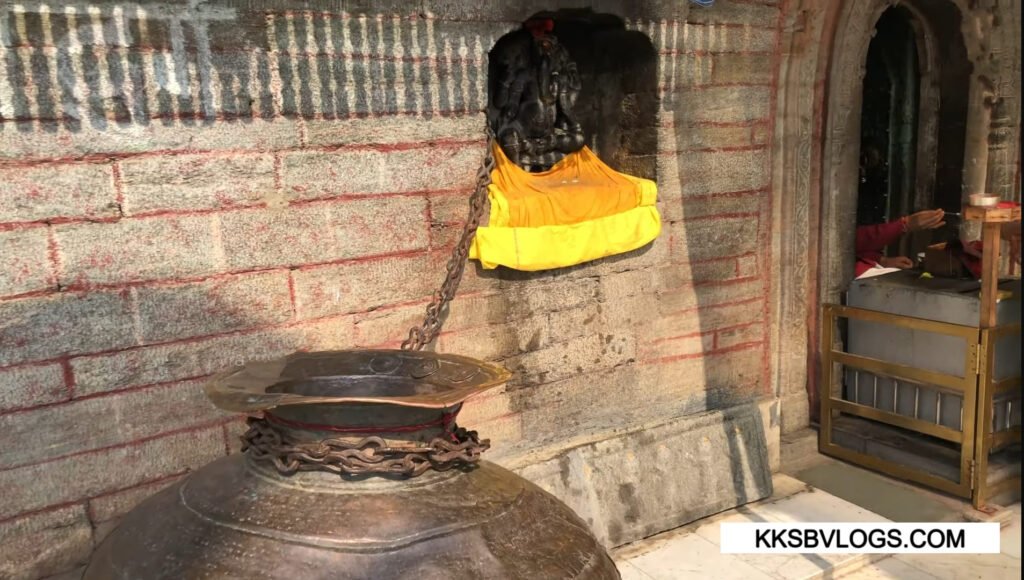
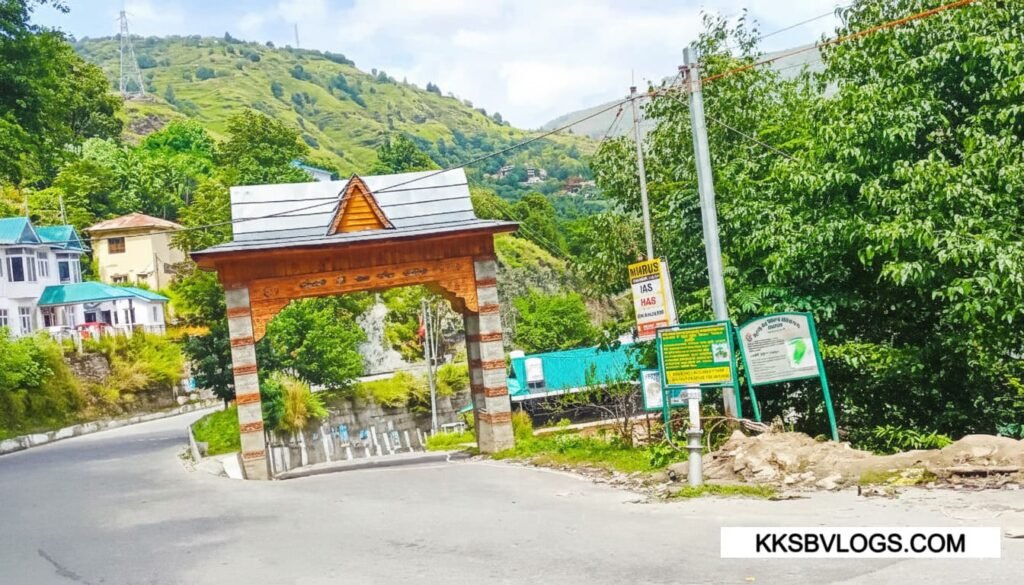
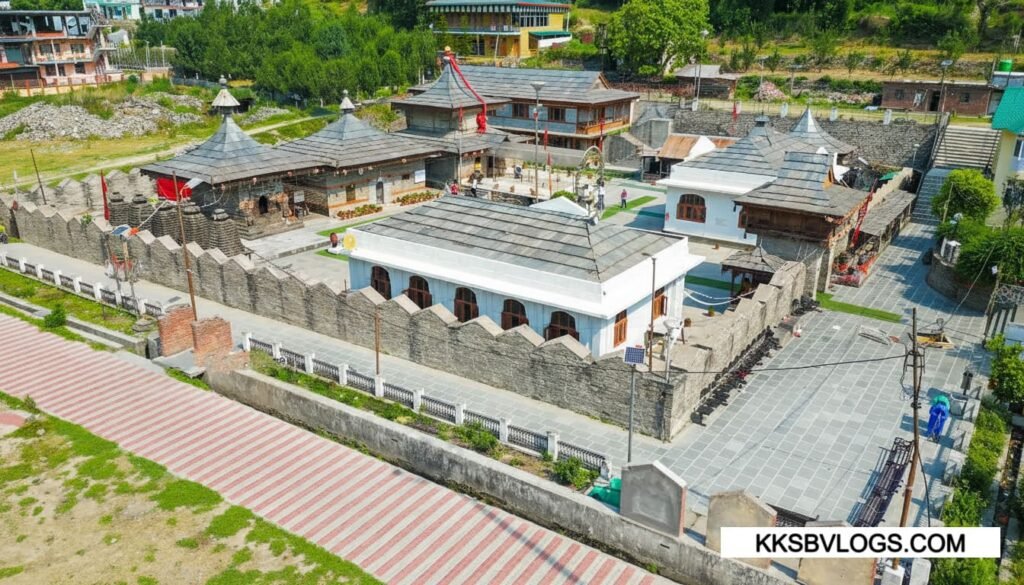
Hateshwari Mata Temple Location
FAQs about Hateshwari Mata Temple / Hatkoti Temple
Where is Hateshwari Mata Temple (Hatkoti Temple) located?
Hateshwari Mata Temple, popularly known as Hatkoti Temple, is located in Hatkoti village, Jubbal Valley, Shimla district, Himachal Pradesh, about 97–100 km east of Shimla. It stands beautifully on the Pabbar River, where the Bishkulti and Raanvati streams meet.
What is the historical significance of Hateshwari Mata Temple?
The Hatkoti Temple dates back to the 6th–9th century CE, the golden era of Indian temple architecture. Ancient Siddha-Matrika inscriptions, Nagara-style architecture, and fine stone carvings confirm its status as one of Himachal’s most historic temples.
Which deity is worshipped at Hateshwari Mata Temple?
The temple is dedicated to Goddess Durga in her Mahishasurmardini form. According to mythology, Hateshwari Mata killed the demon Mahishasura here. Devotees believe her divine power still resides in the sanctum of the Hatkoti Temple.
What are the major festivals celebrated at Hateshwari Mata Temple?
The grandest festival at the Hatkoti Temple is Navratri, when the complex glows with lights, bhajans, and cultural fairs. Other big celebrations include Ram Navami, Dussehra, Shivratri, Janmashtami, and Diwali, attracting thousands of devotees.
What are the key attractions inside Hateshwari Mata Temple?
Highlights of the Hatkoti Temple include the main Mahishasurmardini idol, an impressive Shiva shrine with a giant Shivling, five Pandava stone shrines, the mystical Chained Kalash, and centuries-old mythological carvings on the walls and pillars.
How can travelers reach Hateshwari Mata Temple?
To visit Hateshwari Mata Temple, drive from Shimla via Theog → Kotkhai → Jubbal → Hatkoti, a scenic 3–4 hour route. The nearest railway station is Shimla (~100 km), and the closest airports are Shimla Jubbarhatti (~120 km) and Chandigarh (~200 km).
What is the best time to visit Hateshwari Mata Temple?
The Hatkoti Temple is open year-round, but the most pleasant weather is from March–June and October–November. Visiting during Navratri (March–April & Sept–Oct) is ideal for experiencing its vibrant festivals and cultural celebrations.
Are there visitor facilities at Hateshwari Mata Temple?
Yes. The Hatkoti Temple offers free entry, spacious parking, clean washrooms, and prasad stalls. Photography is allowed outside but may be restricted inside the sanctum. The flat complex makes it convenient even for elderly visitors.

